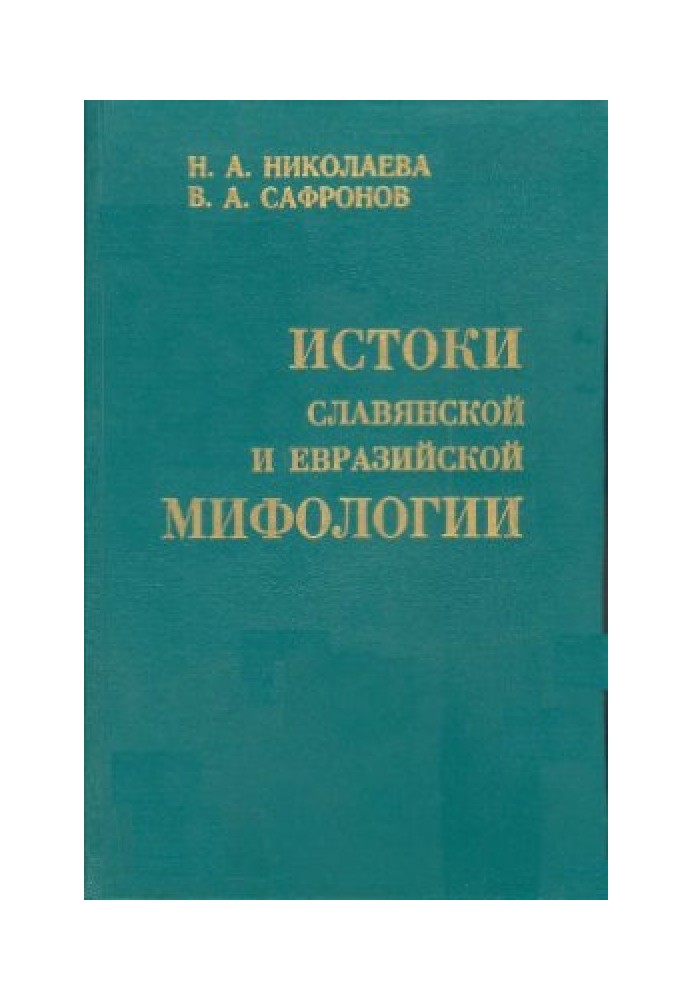Origins of Slavic and Eurasian mythology
 Instant download
Instant download
after payment (24/7)
 Wide range of formats
Wide range of formats
(for all gadgets)
 Full book
Full book
(including for Apple and Android)
History begins with myths that, changing over time, live for millennia. But how can one see the “historical grain” in myths if they have no date? In this book, for the first time, the oldest myth of humanity about the World Tree, created by “Homo sapiens” at the dawn of its existence 35 thousand years ago, is dated. The ancestral home of the Eurasian people (9th millennium BC) has been localized and a whole layer of Eurasian myths has been reconstructed, echoed in the mythology, epic and literature of the peoples descended from the “Eurasians” - Ural, Turkic, Finno-Ugric, Indo-European, including Slavic. The nine-thousand-year antiquity of agrarian rituals, myths and rituals has been established, which became the ideological core of the world's oldest (5th millennium BC) civilization of the Indo-Europeans, and organically passed into the Slavic culture. The book contains rare illustrations and excerpts from many works of world literature. The book is addressed both to specialists in the field of humanities and to a wide range of readers, including high school students and students of history and philology faculties of universities. CONTENTS: Preface 10 Chapter I The World Tree is the oldest model of the universe. Four thousand years of written history about the world tree 14 Myths about the World Tree outside the written tradition and the possibility of their dating 21 The birth of “homo sapiens” and his model of creation - the World Tree Prerequisites for myth-creation 25 Reconstruction of the main planetary myth 35 The Eurasian circle of transformation of the myth about the structure of the world 38 The connection between the death of the world and the death of the World Tree in the myths of Eurasian peoples 41 The Indo-European circle of the myth of World Tree 44 Poetic rethinking of the world tree in "The Tale of Igor's Host" 53 World Tree in Russian literature 55 Honey of poetry 57 Conclusion 58 Chapter II Eurasian myths about the creation of the world 62 Section 1 Ecological crisis at the end of the Paleolithic era 62 Section 2 The creation of the world from an egg in the myths of the Eurasians. The second model of the world Denmark 75Section 3 The fate of the Eurasian myth about creation of the world of Eastern Eurasians. The creation of the world by a bird from the ocean floor. The third model of the world 83 Section 4 The fate of the Eurasian myth about the creation of the world among the Western Eurasians - Indo-European peoples 87 Conclusion 92 Chapter III Myths and legends about the wolf, bow and arrows of the Eurasian peoples 97 Section 1 Myths and legends about the wolf-totem and wolf gods ... 97 Wolves are the saviors of heroes in the Ural myths childbirth 106The she-wolf is the savior and ancestor of the people in the myths of the Turkic-speaking peoples 106Wolf (dog) - ancestor of the Indo-European peoples 107Wolf - deified totem of the Eurasians 109Wolf shepherd, bestial god and god of wealth and abundance among the Indo-European peoples 111Wolf gods among the Ural peoples 115Wolf gods among the Turkic-speaking peoples 116Wolf in Russian magic ny tales 117Wolf in the heroic epic of Eurasian peoples 118Wolf in the heroic epic of the Indo-European peoples 121The origin of the Slavic god Hair of the wolf god 125Conclusion 128Section 2 Bow and arrows in the rituals, mythology and epics of the Eurasian peoples 131Bow and arrows in the wedding theme of the Eurasian peoples 135Bow and arrows in the wedding stories of the Finno-Ugric epic 1 36Onion in the customs and mythology of Turkic-speaking peoplesOnion in mythology and customs Indo-European peoples 147Conclusion 153Chapter IVFrom the great goddess - the mistress of the plant and animal world to the great goddess of agriculture. The formation and evolution of agrarian cults 156Section 1 The emergence of agriculture and cattle breeding. The first proto-cities and the oldest proto-civilizations of the world. The most ancient manifestations of agrarian rituals in monuments of material culture 157 The most ancient farmers of the world are the Proto-Afrasians 158 The most ancient pastoralists of the world are the early Proto-Indo-Europeans/Tahunians 163 Section 2 The great goddess in the mythology of the Indo-European peoples. Agrarian rites of the great goddess, and their echoes in the calendar holidays of European peoples 177Section 3Great goddess of agriculture and deity of plant power 196Slavic goddesses of agriculture and deity of plant power 206Conclusion 218Afterword 220Literature 222AppendixCarpathian-Ooles ancestral home Eurasians. Isolation of Western Eurasians (early Proto-Indo-Europeans) and their migration to Anatolia (X - 9th millennium BC) 238 Eurasian ethnic unity and Eurasian language 238 Takhuni culture 250 Svider culture 259 Comparison of Svider and Takhuni cultures 268 Nostratic community (I language) or areal union? 304Literature 309
Data sheet
- Name of the Author
- Владимир Сафронов Александрович
Надежда Николаева Алексеевна - Language
- Russian












